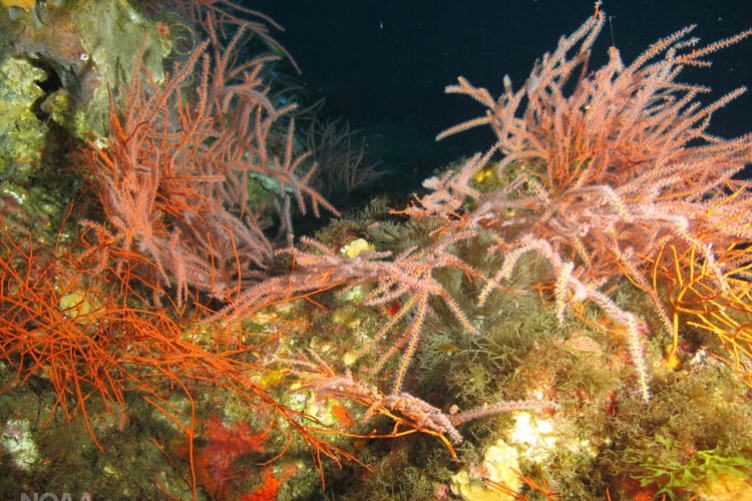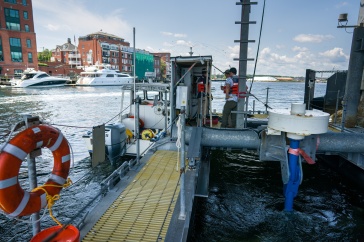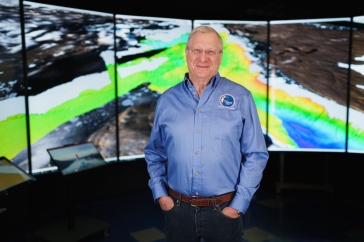
Photo by NOAA
Corals and sponges are important foundations in ocean ecosystems providing structure and habitats that shelter a high number of species like fish, crabs and other creatures, particularly in the seamounts and canyons of the deep sea. UNH researchers have discovered that when it comes to climate change not all deep-sea corals and sponges are affected the same and some could be threatened if average ocean temperatures continue to increase in the deep sea of the Northwest Atlantic.
“These deep-sea corals and sponges are ecologically important because they are foundational species that contribute to the food web, and losing them could eventually lower the biodiversity of the deep sea,” said Jennifer Dijkstra, a research assistant professor in UNH’s Center for Coastal and Ocean Mapping.
"These deep-sea corals and sponges are ecologically important because they are foundational species that contribute to the food web, and losing them could eventually lower the biodiversity of the deep sea."
In their study, published in the journal Global Ecology and Biogeography, the researchers combined data about temperature, dissolved oxygen, salinity and depth with high-resolution underwater video of the seafloor. The video was collected by a remotely operated vehicle (ROV) along the Northeast Canyons and New England Seamount Chain by the National Oceanic and Atmospheric Administration (NOAA) Ocean Exploration and Research branch. The researchers analyzed the data and annotated the ROV video to determine the density of the corals and sponges in specific areas, allowing the scientists to identify their location. They linked environmental variables to emerging patterns and high densities in narrow environmental ranges. Although corals and sponges co-occur, climate-related variables temperature, salinity and dissolved oxygen contributed to the distribution of sponges, whereas seafloor properties of slope and substrate contributed to the distribution of corals.
“The paper shows that not all deep-sea corals and sponges were influenced by the same environmental variables and each has different levels of sensitivity,” said Dijkstra. “Changes in temperature and dissolved oxygen that go beyond what the deep-sea corals and sponges are used to could stress the species’ physiology affecting growth, tissue loss and reproduction.”
In general, deep-sea corals are found 200 to 10,000 feet below sea level where sunlight is nonexistent. Unlike shallow-water coral reefs, which are limited to warm tropical waters, deep-sea corals are found throughout the world's oceans, from tropical to polar regions, forming groves of tree or fan shapes that can reach feet to meters tall. Deep-sea sponge populations can filter water, collect bacteria and process carbon, nitrogen and phosphorus. Deep-sea corals and sponges have been found on continental shelves, canyons and seamounts in deep seas around the world but their full extent is unknown because only 15 percent of the Earth’s seafloor has been mapped with high-resolution imaging.
The Institute for the Study of Earth, Oceans, and Space (EOS) is UNH's largest research enterprise, comprising six center with a focus on interdisciplinary, high-impact research on Earth and climate systems, space science, the marine environment, seafloor mapping, and environmental acoustics. With more than $60 million in external funding secured annually, EOS fosters an intellectual and scientific environment that advances visionary scholarship and leadership in world-class research and graduate education.
-
Written By:
Robbin Ray ’82 | UNH Marketing | robbin.ray@unh.edu | 603-862-4864

















































